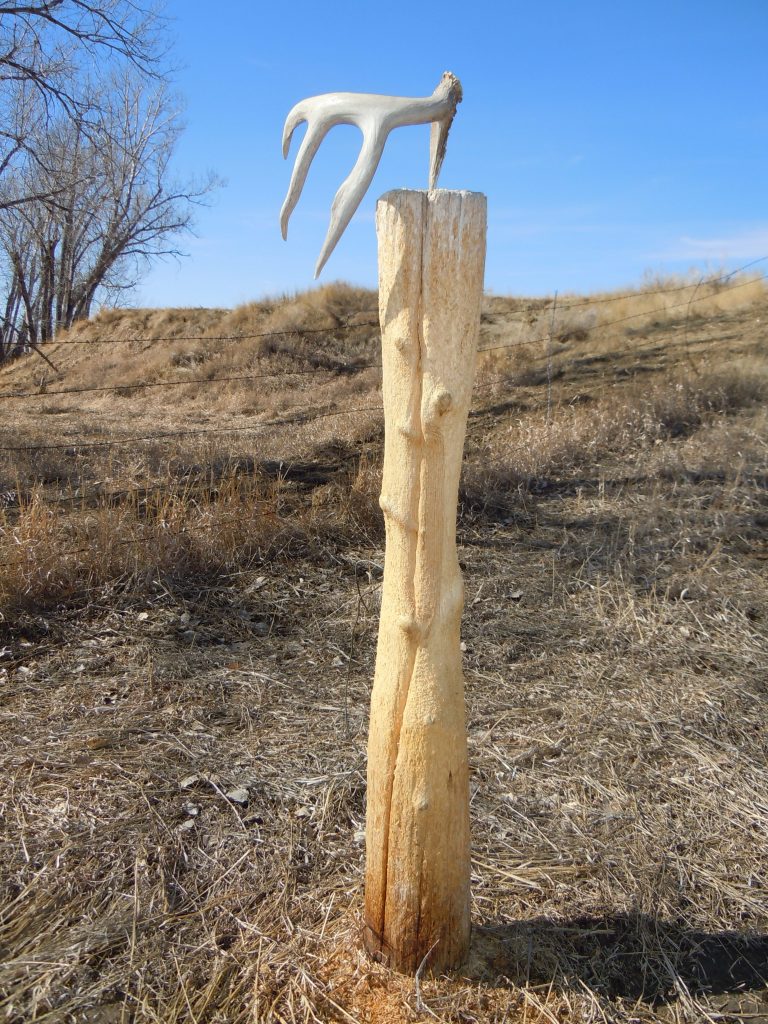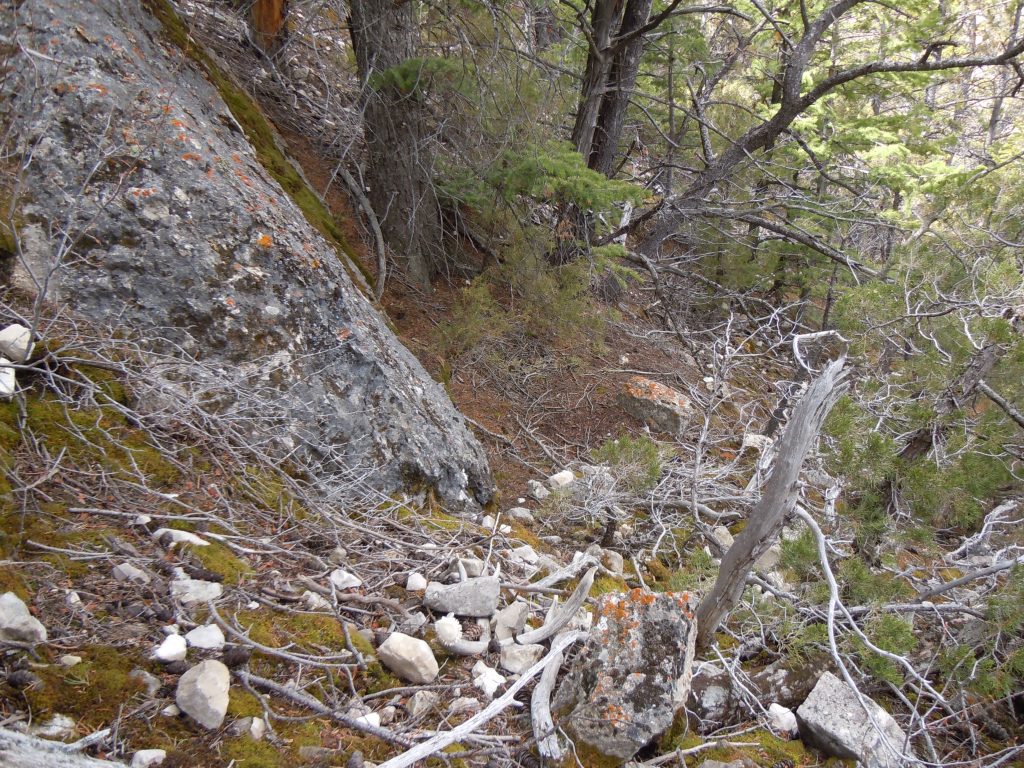It’s happened more than once. After a successful fall, I’ll be finishing a European mount in my barn. Out of obsession, I’ll begin rummaging through the piles of shed antlers clogging up space when it hits me — one of my sheds may be from a buck or bull I tagged earlier in the season that’s currently enjoying spa treatment in my simmering pot.
Fast forward to 2015 when I tagged my best bull with bow — a 6x7 grossing a fraction under 380. His 7-point right side kept nagging at me like the face of a person I think I’ve met before. I traveled to the barn. Sure enough, I uncovered his right shed antler buried in a pile of sheds found the previous spring. Some shed antlers, like the jumbo whitetail shed I found several years ago with mass approaching the unheard of 7-inch circumference realm, guided me to new areas. Although I could never coordinate a grip-and-grin with that heavyweight, just finding his shed antler had me snooping where I’d never snooped before. And it led me to other trophy bucks.
Finding shed antlers gives you solid evidence a certain bull or buck made it through hunting season and most likely the winter. Sure, some animals may still perish in a freak spring storm or succumb to predators or even disease, and a few may meet their maker on our bustling highway systems. Bad luck aside, if you find shed antlers, then you stand a good chance of hunting that same animal in the upcoming season.
If you enjoy the current trend of being a “shed head,” take it a step beyond just finding bone. Use your outings to evaluate an area for its full bowhunting potential.
Understand Where They Shed
Before you begin chasing a buck or bull simply based on its shed antlers, be smart. Not all shed antler hotspots are created equally. In some Western zones, elk and mule deer migrate miles between where you might find them during hunting season and where they cast their bone. It’s been documented that certain Western Wyoming mule deer have the longest continental U.S. migration — a trek of 150 miles or more. Whitetail areas are similar. They may not travel 150 miles, but some Northland bucks migrate to areas miles from their fall homelands. Even Midwest and Great Plains bucks lace up their hiking boots if winter conditions worsen. Talk to Southern hunters, and they’ll share similar tales of bucks moving across a field to take advantage of an early green-up in a nearby valley.

Many times a simple shed outing will lead to prime whitetail sign — sign you can use to plan your fall big-buck ambush.
What this means is you can’t always place the owner of a set of shed antlers at the precise location of where you found them. Scouting, year-round observation and insight from locals can help you evaluate areas to understand if the deer are locals or nomads.
Don’t give up hope of finding a buck or bull again if the clues indicate it’s a drifter. Some deer may simply move a mile or so just to take advantage of stacked hay or spilt corn. By backtracking, you could discover the summer and fall range of a shed buck on a farm next door.
As for elk and mule deer, even though many may move five to 10 miles to winter range, oftentimes it’s a simple drop in elevation. In some of the areas I hunt, the elk drop from 10,000 feet to 7,000 feet for winter relief. Antlers are strewn in the lower elevation zone, but the main herds still reside in a vertical path directly above winter range. Local biologists can shed (pun intended) more light on migration movements and provide insight if the giant mule deer antlers you picked up are from a buck at the current elevation or at the uppermost observation level.
One trait I have found true of both elk and mule deer is that as hunting pressure increases they oftentimes retreat to the same canyons where they winter and eventually shed their antlers. The reason for this return is simple — it’s a sanctuary. When hunting pressure increases, deer and elk fall back to thick, vertical, rugged and remote refuge they can depend on to impede the advance of hunters.
The same philosophy occurs in winter. Deer and elk require good winter habitat, but they also need a safe haven from predators such as coyotes, mountain lions, wolves and, in some instances, poachers. Even today’s increasing trend of shed hunting puts additional strain on bucks and bulls to move farther into seclusion. That’s the reason some Western states have implemented seasons and regulations on the collection of naturally shed antlers. Seek out the nastiest of habitat and you could discover a new boneyard for Western big game or whitetails, regardless of their zip code.
Look Beyond the Antlers
Having hard evidence of shed antlers adorning your fireplace mantle gives you a boost of confidence, but the act of shed hunting alone jumpstarts any hunt. By hiking and scrounging around in a hunting area, you obtain a unique, firsthand perspective that Google Earth can’t provide because no matter how hard you peer at your screen, you can’t see under the canopy. Subtle funnels, hidden benches, traffic-jam trails, rub clusters and other sign have to be seen in person to understand their full hunting potential. Topographical maps can reveal these ever-so-slight land variations, but only onsite scouting reveals whether deer or elk really utilize a terrain factor like you suspect.
One spring, I stumbled upon a nasty canyon against a timbered, north-facing slope. I knew immediately from the sign that elk were wintering there. It didn’t take long for me to discover a couple of fresh shed elk antlers. An open mesa across the canyon above a shrouded north face appeared to also hold the promise of an elk antler, but it was the route through the dark timber that really opened my eyes. Not only were the elk carving paths through the belly-deep snow, but from past clues I determined it was also being used as prime rut cover. Heavy hunting pressure pushed elk from traditional elk habitat to the steep canyons where few, if any, hunters roamed. Guess where I’ll be hunting when I draw that unit?
Whitetail outings divulge the same, if not more, evidence. Before you cringe at hiking through whitetail habitat, do the math. Any whitetails you bump will have six or more months to forget about your intrusion. And don’t think for a second you’re the only invader in the county. Coyotes and other predators routinely push deer out of refuge to test their health level. Farmers, rural utility personnel, misguided souls, trespassers and the like all make refuge appearances whether you realize it or not.
Making notes on apps such as ScoutLook Weather allows you to mark clusters of scrapes, log rub lines and document areas of intense bedding activity. As you prepare for hunting season, you’ll know what outside trails to set up on to target the interior hotspots.
Lastly, learn the country. Understand how the deer and elk utilize trails, where they feed and how they escape. Spring trails give up a lot of secrets. The trails of highest usage will either be more snow-packed than an Alaska Walmart or mud-packed from the spring thaw. In either instance, backtrack the trails to discover preferred bedding or feeding areas. Rubs and scrapes will still be evident from the previous fall along popular routes.
Following these trails, marking them on your Garmin and avoiding dead ends is great fall preparation. You’ll be able to access rugged country under cover of darkness better and avoid zones where animals feel safe.
My addiction to shed antler hunting goes way beyond counseling help. Why look for a cure when every shed antler I pick up could increase my fall hunting success?

Following trails, even steep trails like this, can lead you to shed antlers and an understanding of how big-game species use a particular landscape.
Optical Advantage
As you fall further into the spiral of the shed antler addiction, you’ll discover your best friend in the field is your binoculars. As when spotting game, your eyes soon begin to scan for the unnatural points and curvature of antlers. Despite an antler’s unique definition, it can still blend in with the environment. Tree limbs, leaves, brush and the like can camouflage an antler, making it nearly impossible to spot.
Whether I’m burning boot leather in the whitetail woods or tearing it up on a Western slope, I always have binoculars strapped to my chest. In the whitetail woods, I stop and scan often for indications of antlers buried in the forest duff. Binos help me determine if a white outline is a weathered limb or an antler tip. Plus, I can save a few steps by scanning across creeks or down into coulees.
The same goes for vast Western landscapes. Binoculars give me eagle eyesight to scan across canyons or down into chasms for antler evidence. Out West, binocular confirmation can save boot leather and a sprained ankle if the spotting turns out to be false.
To get the most out of a binocular partner, work to high ground and glass down. Even in the Midwest you can find swales or hay bales to give you a leg up when spotting with binoculars.






